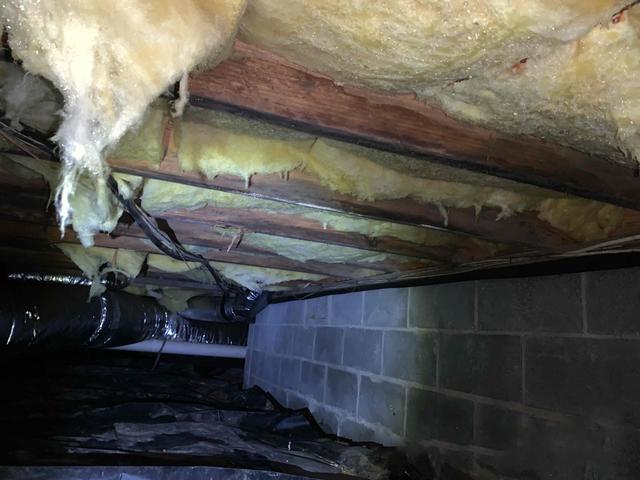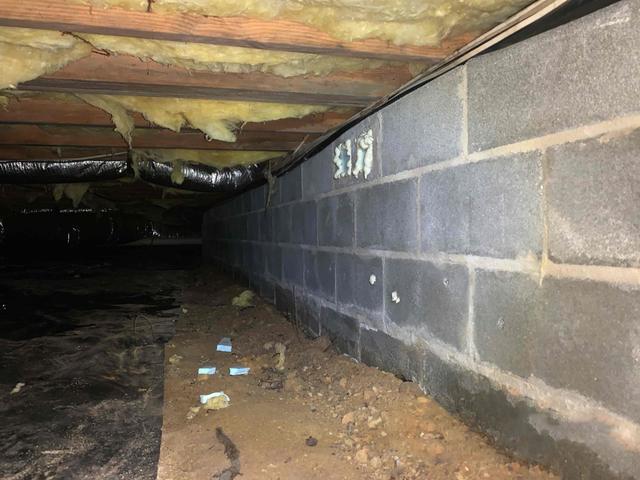
Fiberglass Insulation
The fiberglass insulation batts in this crawl space are damp with moisture and are sagging out of the floor joists. The fiberglass is like a sponge and will absorb excess moisture from the air, causing it to pull apart and fall to the floor in chunks when it becomes wet.

Mold and Mildew Growth
Mold and mildew have grown on the floor joists within the crawl space. This can happen on any organic materials when the relative humidity is around or above 60% with warm temperatures. The mold gives off a musty odor that can rise into the floor above.

Vapor Barrier
A 6-mil vapor barrier is used to cover the dirt flooring in this crawl space. This liner has the durability of a trash bag and is easily torn and displaced. There are gaps around the piers and at the base of the foundation walls, allowing moisture rising from the earth to affect the relative humidity and environment of the crawl space.

Foundation Walls
Efflorescence is visible on the foundation walls of the crawl space, a clear indicator of moisture infiltration. When outside moisture seeps through these porous cinderblock walls, it pulls the salts and sediments from within the blocks to the surface, leaving behind a chalky, powdery substance known as efflorescence.

